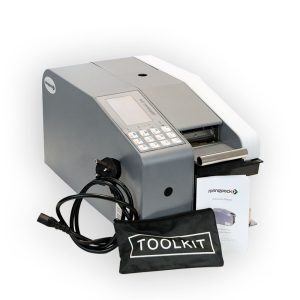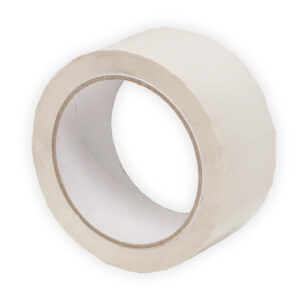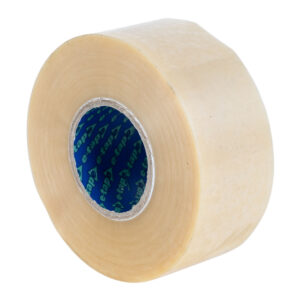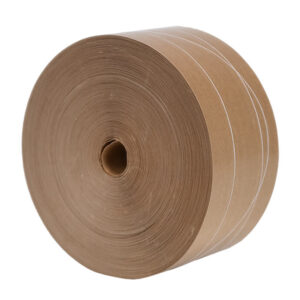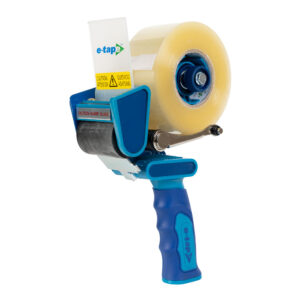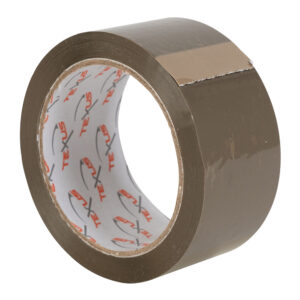When it comes to packing tapes, they all have very similar uses. That being said, different types of tapes excel in different areas.
To learn about key features; similarities; and the pros and cons of the top three types of tape on the market – continue reading.
To best understand the different types of performance between tapes, it’s important to understand the adhesives that make them work – Acrylic, Hotmelt, Natural, and Solvent.
What is Acrylic Adhesive?
This type of adhesive has a great overall performance, with a generally low cost. It is tear resistant and does not require much additional pressure after application. It is commonly found on Polypropylene tape.
It is a great all-rounder, is cost-effective and is appropriate for many applications.
It is made from acrylic resins, and tapes are usually comprised of two layers – a film layer and an adhesive layer.
What is Solvent Adhesive?
This type of adhesive is commonly found on vinyl tapes, though polypropylene tape with a solvent adhesive is available.
The solvent adhesive is more heavy duty than both acrylic and hotmelt. It is suited to longer term applications such as export, or cold storage. It is usually more expensive than natural, acrylic and hotmelt adhesives.
What is Hotmelt Adhesive?
Hot melt tape is great under stress and is stronger than an acrylic adhesive.
It is made from thermoplastic polymers and is comprised of three layers. These layers are a film layer, a release layer to allow for the tape to unwind from the roll and an adhesive layer.
Due to its high tack initial grab, it is commonly found in automated packaging processes or busy packing environments.
What is Natural Adhesive?
This type of adhesive is commonly found backing gummed paper tape. It requires water to activate its tack, because of this, it needs to be fed through a special Gummed Paper Tape Machine.
Now we understand the different types of adhesive, let’s explore the different types of film.
What is Polypropylene Tape?
Polypropylene tape is commonly used as packing tape because it is incredibly durable. This type of tape cannot easily be torn by hand, so is often used in an e-tape dispenser.
Whilst most commonly found with acrylic adhesive, this type of tape is also available with hot melt and solvent adhesive.
Polypropylene tape is widely regarded as a very cost-effective tape option. This is the standard material e-tape is made from.
If you are looking for personalised packaging tape, polypropylene tape can be branded with any branding or logo you wish. To find out more, why not get in touch?
What is Vinyl Tape?
Vinyl tape is easy to tear and is incredibly durable. It is more expensive than Polypropylene tape and is designed to withstand more tension and temperatures. Most vinyl tapes are suitable for cold storage environments.
A further benefit of vinyl tapes is that they are very quiet to apply, meaning it is often favoured by packers.
Vinyl tape is commonly used for longer term applications so it is perfect for cold storage and transportation.
What is Paper Tape?
Kraft paper tape is a great kind of tape for many applications. It is available as a self-adhesive roll or as a water activated gummed roll. Kraft paper tape is commonly made with natural adhesive.
Paper tape is ideal for those who wish to easily improve their eco-credentials, as paper kraft tape is one of the few kinds of tape that can easily be curbside recycled – it doesn’t even need to be removed from the box!
Water Activated Paper Tape (WAT, for short) must be used with a gummed paper tape dispenser, like such as the IntelliSense dispenser. Switching our WAT dispenser can save a huge amount of time whilst packing, as it features IntelliSense technology. IntelliSense technology allows for the WAT machine to dispense the perfect length of tape with a simple wave of your hand.
We hope this has been useful to you in exploring the tape options available. If you would like any further information, or to request a sample, please click here.







